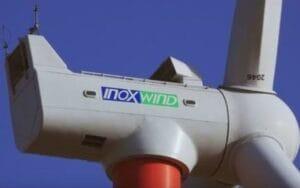1. At a Glance
NHPC — India’s largest hydropower producer — just posted Q1 FY26 numbers that say, “steady as a dam wall” rather than “electrifying growth.” Revenue at ₹3,214 crore (+19% YoY) and PAT at ₹1,131 crore (+4.2% YoY) aren’t fireworks, but they’re predictable. The company also plugged in two new projects: 800 MW Parbati-II and 214 MW Karnisar Solar. Dividend yield? Decent at 2.24%. Debt? Flowing in like monsoon rivers — ₹2,000 crore fresh bonds issued just this quarter.
2. Introduction
In a power sector where thermal giants like NTPC get the spotlight, NHPC quietly plays the long game with hydropower — the tortoise in a race full of sprinting hares.
Formed in 1975, it’s aNavratna PSUwith an installed capacity of 7,233 MW, of which ~96% is hydro. It operates 28 stations spread across mountains, valleys, and politically sensitive zones where building a dam is an engineering feat and a bureaucratic miracle.
Unlike flashy renewable players, NHPC’s revenue curve is more like a flat canal than a rollercoaster. The five-year sales CAGR is barely 1%, but that’s the trade-off for stable, regulated tariffs and 50%+ operating margins. Investors treat NHPC less like a growth rocket and more like a dividend-bond hybrid — until the occasional capex wave disturbs the calm.
3. Business Model (WTF Do They Even Do?)
NHPC makes money by:
- Hydropower Generation:Bulk power sold to state electricity boards under long-term PPAs.
- Solar & Wind:A growing but small slice — 262 MW installed so far.
- Consultancy & Project Management:Helping others build dams and renewable projects.
- Trading of Power:
- Low-margin, opportunistic revenue stream.
Revenue is seasonal — Q2/Q3 are cash cows thanks to monsoon-fed generation; Q4 often dips.
4. Financials Overview
Quarterly Snapshot – Consolidated (₹ Cr):
| Metric | Q1 FY26 | Q1 FY25 | Q4 FY25 | YoY % | QoQ % |
|---|---|---|---|---|---|
| Revenue | 3,214 | 2,694 | 2,347 | 19.3% | 36.9% |
| EBITDA | 1,802 | 1,609 | 1,090 | 12.0% | 65.3% |
| PAT | 1,131 | 1,102 | 920 | 4.2% | 22.9% |
| EPS (₹) | 1.06 | 1.02 | 0.85 | 3.9% | 24.7% |
| EPS (Annual) | 4.24 | — | — | — | — |
Commentary:EBITDA margins remain king-sized at 56%. PAT growth lagged revenue due to higher interest and depreciation from new capacity.
5. Valuation (Fair Value RANGE only)
Method 1: P/E Method
- Annualised EPS = ₹1.06 × 4 = ₹4.24
- Sector P/E range for stable PSUs: 18–22
- FV Range = ₹76 – ₹93
Method 2: P/B Method
- Book Value = ₹39.5
- Sector P/B range: 1.8–2.2
- FV Range = ₹71 – ₹87
Method 3: DCF (Simplified)
- Assume ₹4,500 crore annual FCF, 9% discount rate, 2% terminal growth → ₹78 – ₹90
Educational Disclaimer:This FV range is for educational purposes only and isnotinvestment advice.
6. What’s Cooking – News, Triggers, Drama
- Capacity




















